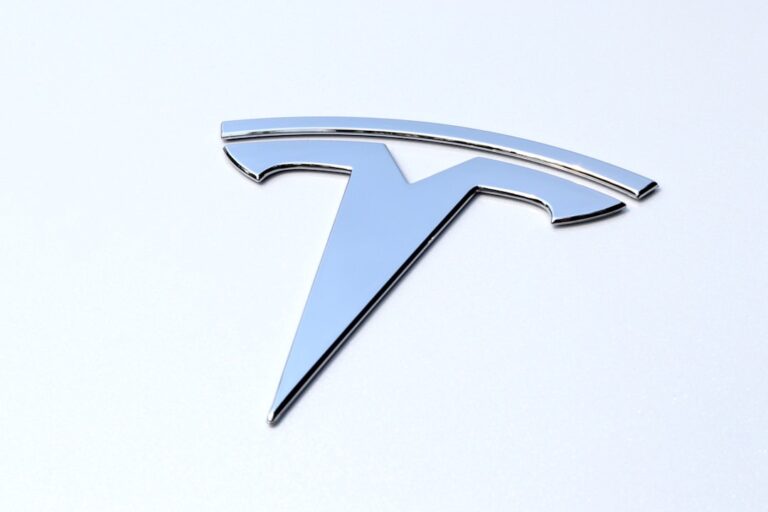
Meta Description: Tesla stock faces challenges as BYD unveils charging breakthrough and analysts adjust price targets amid market volatility. Key insights for TSLA investors through 2025.
TSLA Stock News Article
Tuesday, March 18, 2025, 12:33 PM EDT
Editorial Log:** Research conducted on March 18, 2025, analyzing real-time market data and recent analyst reports. Primary sources include financial statements, analyst projections from Morgan Stanley, Baird, U.S. News, Mizuho Securities, and Wedbush. Key decision: focusing on the confluence of technical price movements, competitive challenges from BYD, and the impact of recent analyst target revisions rather than speculative political connections.
Tesla Shares Extend Decline Amid BYD’s Charging Innovation and Analyst Target Cuts
Tesla (TSLA) shares are experiencing continued pressure in Tuesday’s trading session, falling 3.85% to $228.84 as of midday. The decline comes amid a perfect storm of headwinds, including a significant advancement in electric vehicle charging technology announced by Chinese competitor BYD and a substantial price target reduction from RBC Capital Markets. The stock has been exhibiting increased volatility throughout March, following a steep 15.4% single-day plunge just one week ago on March 113.
Today’s retreat continues a pattern of price instability, with intraday data showing Tesla shares fluctuating between $222.28 and $230.10. The current price represents a significant discount from Tesla’s 52-week high of $488.54, placing mounting pressure on CEO Elon Musk to reassure investors about the company’s long-term competitive positioning.
BYD’s announcement of new electric vehicles capable of charging at speeds comparable to traditional gasoline refueling has intensified competitive concerns. Meanwhile, RBC analyst Tom Narayan has reduced his Tesla price target from $440 to $320, citing diminished expectations for Tesla’s full self-driving technology pricing and robotaxi market penetration2. Despite the reduction, Narayan maintains a relatively bullish stance, with his target still suggesting nearly 40% upside potential from current levels.
Market Response and Technical Analysis
Tesla’s stock has been experiencing significant volatility in recent trading sessions. The stock opened at $228.19 this morning, relatively flat from the previous day’s open but showing weakness compared to Monday’s close of $238.01. With volume already exceeding 66 million shares by midday, trading activity is approaching the average daily volume of 88.7 million shares.
From a technical perspective, Tesla’s current price represents a substantial deviation from both its 50-day moving average ($348.30) and 200-day moving average ($282.99), suggesting bearish momentum in the near term. The stock’s price-to-earnings ratio stands at an elevated 111.63, reflecting continued high expectations despite recent operational challenges.
Market concerns intensified after Tesla’s disappointing performance on March 11, when shares plummeted 15.4%, closing at $222.15. The significant single-day drop was attributed to weakening sales performance in key global markets, with German deliveries reportedly falling 59% to their lowest levels since 2021, and Chinese sales declining 11.5% year-over-year3.
Analyst Projections Through 2025: Diverging Perspectives
Wall Street remains deeply divided on Tesla’s future trajectory, with 2025 price targets varying dramatically. On the conservative end, U.S. News analysts have established a year-end price target of $249.76, representing modest upside from current levels. Their assessment looks beyond short-term dynamics to focus on fundamental challenges in Tesla’s business model and competitive positioning1.
In contrast, more bullish forecasts include:
| Forecaster | Tesla Stock 2025 Price Target |
|---|---|
| U.S. News | $249.76 |
| Morgan Stanley | $400 |
| Baird | $480 |
| Mizuho Securities | $515 |
| Wedbush | $515-$650 |
| Economy Forecast Agency | $1,109 |
The remarkable disparity in price targets underscores the polarized investor sentiment surrounding Tesla. Morgan Stanley recently raised its price target by 29% to $400, pointing to Tesla’s expanding investor base, its role in the AI revolution, and ongoing energy transition trends1.
Baird’s $480 target, while seemingly conservative compared to current levels, actually represents a 71% increase from its previous forecast. The firm cites potential advancements in Tesla’s autonomous vehicle software, regulatory advantages for the robotaxi program, and the upcoming launch of more affordable EVs as catalysts for growth1.
Competitive Landscape and Market Share Erosion
A critical factor weighing on Tesla’s valuation is the company’s declining market share in the EV sector. Despite maintaining leadership in total EV sales, Tesla’s market dominance has diminished significantly in recent years. By mid-2024, Tesla’s share of the U.S. EV market dropped below 50%, a dramatic decrease from its 82.5% peak in 20191.
This market share erosion coincides with intensifying competition from established automakers pivoting toward electric and hybrid vehicle production. In North America and Europe, companies like Ford, Hyundai, and Kia have emerged as formidable rivals. Meanwhile, in China, BYD has surpassed Tesla in quarterly revenue, presenting a substantial challenge in the world’s largest EV market1.
Today’s announcement from BYD regarding their charging technology breakthrough exemplifies the competitive threat. The Chinese automaker’s new electric vehicles reportedly can charge at speeds approaching traditional gasoline refueling, addressing one of the key consumer adoption barriers for electric vehicles2.
Impact of Elon Musk’s Political Connections and Leadership Focus
Since the November 2024 presidential election, Tesla stock has experienced remarkable volatility. Following Trump’s victory, Tesla shares rallied approximately 85%, buoyed by Musk’s appointment to head the Department of Government Efficiency (DOGE). However, recent market action suggests investors may be reassessing whether Musk’s political pursuits could detract from his focus on Tesla’s operations1.
Analysts remain divided on the net impact of Musk’s governmental role. Wedbush’s Dan Ives characterized Trump’s election as a “game changer” for Tesla’s self-driving technology and robotaxi initiatives, suggesting regulatory barriers might be removed more quickly. Mizuho Securities similarly upgraded their price target to $515, citing a “positive recalibration with the new administration” that could create a more favorable regulatory environment1.
Conversely, leadership concerns have emerged as Musk balances his responsibilities at Tesla with his new governmental duties. The divided attention comes at a critical juncture for Tesla as it faces intensifying competition and challenging market conditions3.
Four Critical Factors for Tesla’s 2025 Performance
Investors monitoring Tesla’s stock should focus on four key indicators that will likely determine the company’s performance trajectory through 2025:
1. EV Sales and Market Share
Tesla’s ability to maintain or recapture market share will be crucial. While the overall EV market continues to expand, now accounting for approximately 8% of total U.S. auto sales (up from 7.2% a year earlier), Tesla’s share of that growing pie has diminished. Stephanie Valdex Streaty, an industry insights director at Cox Automotive, noted: “Despite Tesla’s declining sales, with its EV sales share now below 50% for the first time, the overall competitive landscape for electric vehicles is intensifying”1.
2. Earnings Performance
Tesla’s financial health will be closely scrutinized in upcoming quarterly reports. While Wall Street projects earnings growth of 28% annually next year, the stock’s current valuation at approximately 130 times estimated earnings significantly exceeds the average P/E ratio of 29 for other “Magnificent 7” technology companies1.
Another concern for earnings quality is Tesla’s reliance on carbon credits for profitability. In 2023, Tesla earned nearly 34 million carbon credits through its EV sales, almost doubling the 19.1 million from the previous year. Any regulatory changes affecting these credits could materially impact Tesla’s bottom line1.
3. Robotaxi Development and Timeline
The Cybercab unveiled in October represents Tesla’s ambitious entry into the autonomous ride-hailing market. According to Precedence Research, the global robotaxi market could reach nearly $189 billion by 2034, growing at a compound annual rate of 50%. Tesla’s ability to execute its robotaxi strategy will significantly influence investor sentiment1.
However, RBC’s recent target reduction reflects tempered expectations for this initiative. Analyst Tom Narayan has halved his projection for Tesla’s monthly revenue from full self-driving technology from $100 to $50 per month by 2030, while also forecasting decreased market penetration2.
4. Regulatory Environment
Despite Musk’s traditionally anti-regulatory stance, Tesla continues to benefit substantially from government policies, particularly through lucrative carbon credits. The evolving regulatory landscape under the current administration could either accelerate or impede Tesla’s growth initiatives, particularly regarding autonomous driving approval and environmental incentives1.
Conclusion: Navigating Tesla’s Volatility in an Uncertain Market
Tesla’s current stock trajectory reflects the complex interplay of competitive pressures, valuation concerns, and operational challenges. While the stock has retreated significantly from its 52-week highs, analyst projections suggest potential recovery paths with varying degrees of optimism.
For investors, the key consideration remains whether Tesla can successfully navigate increasing competition while executing on its ambitious technology roadmap. The potential for regulatory fast-tracking of autonomous driving technology and the launch of more affordable EV models could provide catalysts for renewed growth. However, these opportunities must be weighed against BYD’s technological advancements and Tesla’s declining market share in key regions.
As Tesla approaches its next earnings announcement, anticipated on April 23, 2025, market participants will be closely monitoring delivery numbers, margin trends, and any strategic updates regarding the Cybercab timeline and affordable vehicle models that might reinvigorate consumer demand.
Further Reading:
- Tesla Stock Prediction for 2025 – InvestorsObserver
- Tesla Stock Extends Losses on BYD Charging Advancement – Yahoo Finance
- Tesla Stock Price Drop Analysis – Economic Times
Keywords: Tesla stock, TSLA, EV competition, BYD charging technology, robotaxi market, Tesla price target 2025, Elon Musk DOGE, Tesla market share decline, analyst forecast Tesla
Citations:
- https://investorsobserver.com/news/tesla-stock-prediction-for-2025-heres-what-wall-street-expects-next-year/
- https://finance.yahoo.com/video/tesla-stock-extends-losses-byd-134250175.html
- https://economictimes.com/news/international/us/tesla-stock-price-drop-on-march-11-2025-why-tsla-shares-fell-elon-musks-response-and-future-outlook/articleshow/118893552.cms
- https://www.investors.com/news/tesla-stock-elon-musk-buy-or-sell-fsd-june/
- https://stockanalysis.com/stocks/tsla/
- https://www.fool.co.uk/2025/03/13/3-reasons-why-tesla-stock-has-crashed-39-in-2025/
- https://finance.yahoo.com/news/tesla-stock-lost-more-third-224100139.html
- https://www.morningstar.com/stocks/xnas/tsla/quote
